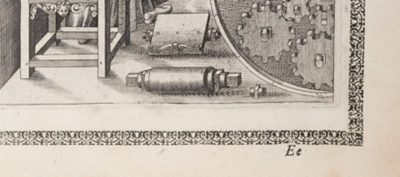Agostino Ramelli: Le diverse et artificiose machine del Capitano Agostino Rammelli dal Ponte della Tresia, Ingeniero del [...] Re di Francia et di Pollonia. (Paris : Casa del'autore, 1588).
acquired in 2015
An e-book reader that can store thousands of books? Agostino Ramelli, a military engineer born in Ponte Tresa, near the Italian-Swiss border, in 1531 would have been thrilled by a device of this kind. An e-reader would probably not have surprised him much, since he himself invented the famous book wheel on which he could "upload" more than ten books at a time.
&crop=(53,260,540,747))

&crop=(33,218,554,739))